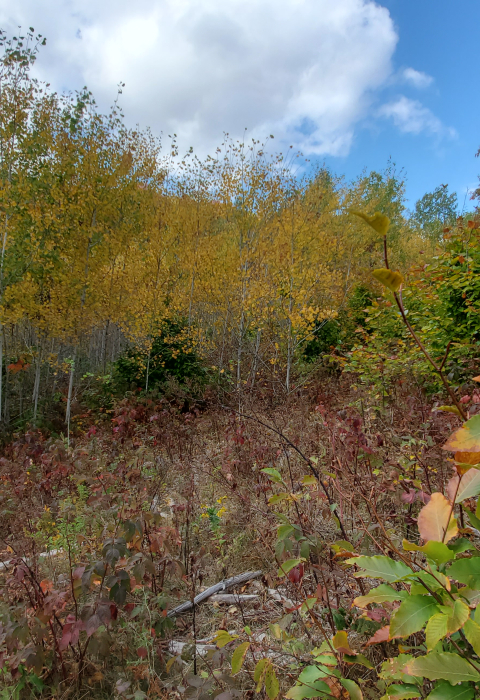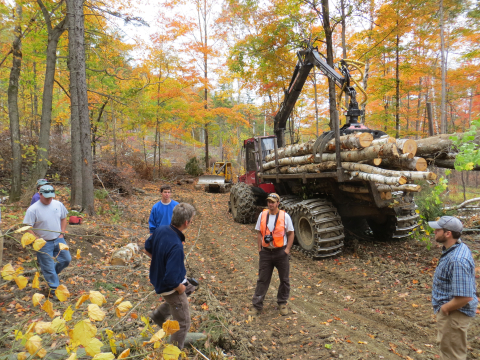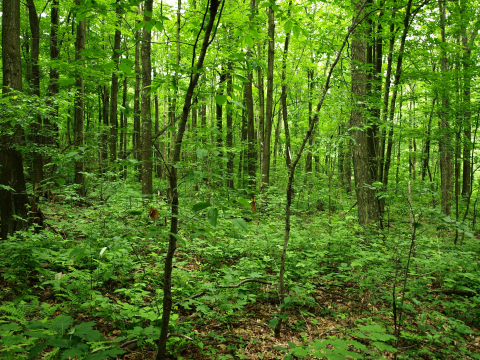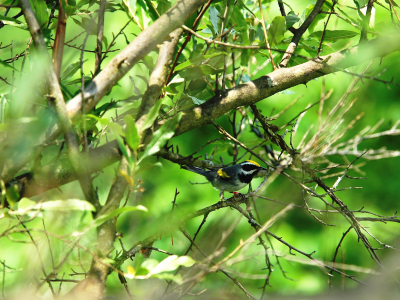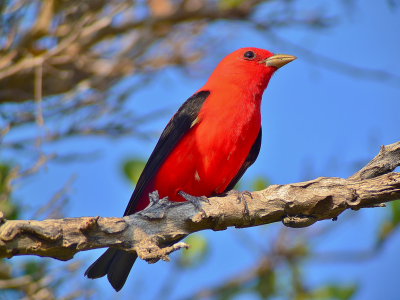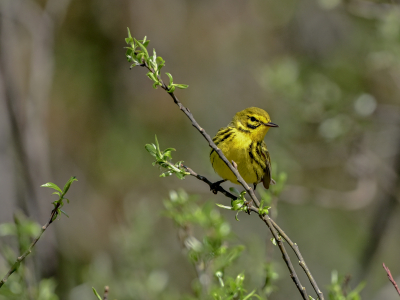Carbon dioxide released by humans’ burning of fossil fuels is the key “greenhouse gas” driving climate change, which is increasingly affecting people, plants, and wildlife.
In healthy forests, trees remove, or sequester, carbon from the air and store it in their wood. Young, quickly growing trees take in carbon at a rapid rate. Older, slower-growing trees sequester carbon more slowly but have the capacity to store more of it.
Managing Forests and Helping Wildlife
A growing number of concerned citizens believe the most important thing trees and forests can do is to sequester and store carbon to limit climate change. Creating young forest that rapidly captures carbon can contribute to that goal while also helping to meet the habitat needs of both common and rare wildlife.
We can help wildlife by mimicking natural disturbances through carefully cutting down trees in strategic places. Harvesting timber (logging) can lock up carbon when the wood is used for buildings, furniture, flooring, and other long-lasting products. Heating our homes and other structures using high-efficiency wood stoves can reduce the amount of irreplaceable fossil fuel that we burn.
Harvested Wood is Replenished by Ongoing Tree Growth
In the well-watered Northeast, wood harvested from carefully managed forests is quickly replaced by ongoing tree growth. For that reason, logging offers a sustainable source of timber products, heat energy, and, in many cases, revenue for landowners and a boost to local economies. If timber harvests are sited and carried out properly, wildlife can gain important young forest habitat.
The Young Forest Initiative does not advocate widespread clearcut timber harvesting: rather, the goal is to locate timber harvests of appropriate types in places where those harvests will do the most good for wildlife.
The U.S. Forest Service is one of many natural resources agencies to consider carbon stewardship when planning land management actions, including harvesting trees.
Protecting Forests, Plants, and Animals
A key step in addressing climate change is to protect forests in general. Turning a woodland into a development – whether a tract of houses or a solar collection field – causes an immediate release of carbon while ending that woodland's potential for absorbing and storing carbon in the future.
Many forest and wildlife scientists agree that managing some forests to ensure diverse, different-age habitats with different kinds of trees doesn’t significantly harm northeastern forests’ overall ability to absorb carbon. Such management actions can actually improve forest health while helping to keep many kinds of wildlife and native plants on the landscape.
Resources
Learn more from the brochure Protecting Forests, Storing Carbon, and Helping Wildlife.
Carbon Conservation of MassWildlife Forest Lands explains how a state agency balances the need to make habitat for wildlife with the importance of storing carbon in woodlands.
A report by scientists with the state universities of Massachusetts and Vermont, Forest Carbon: An Essential Natural Solution for Climate Change, helps landowners make informed decisions on how to manage their woodlands.

